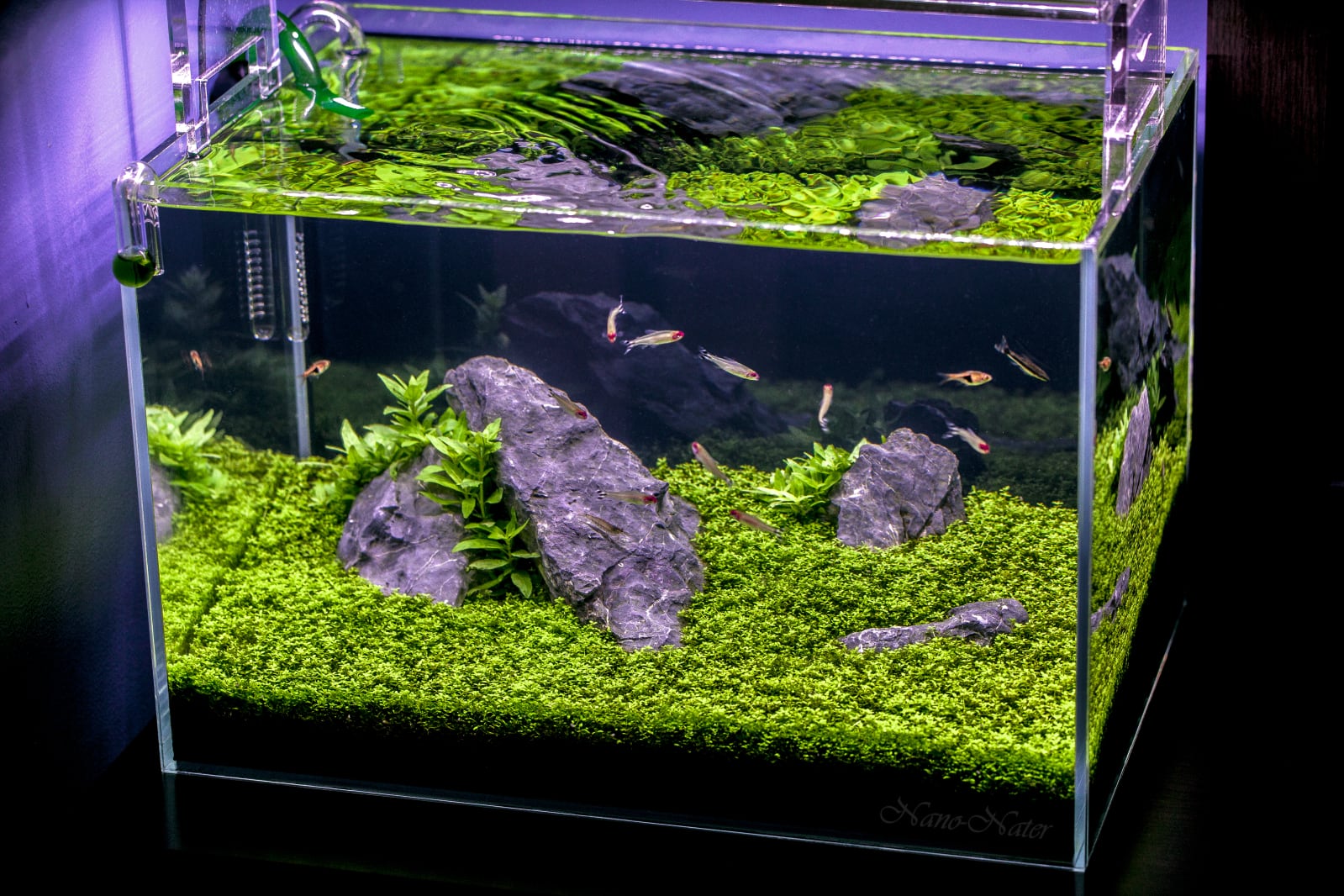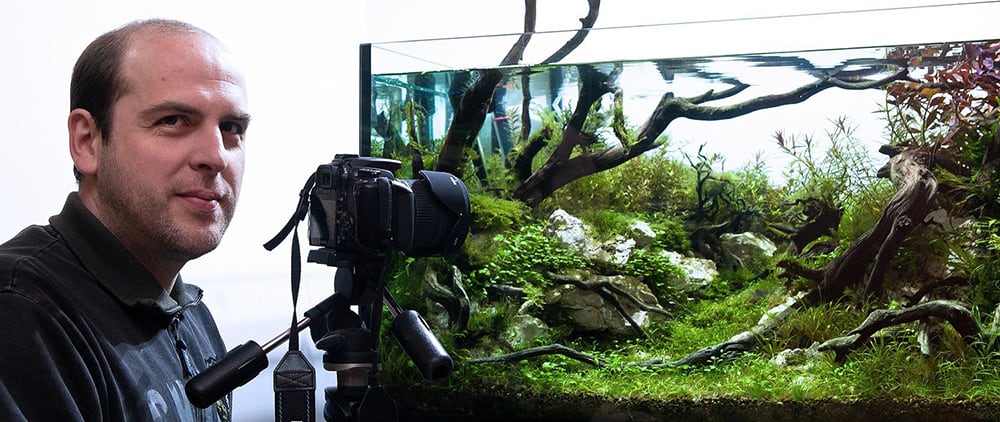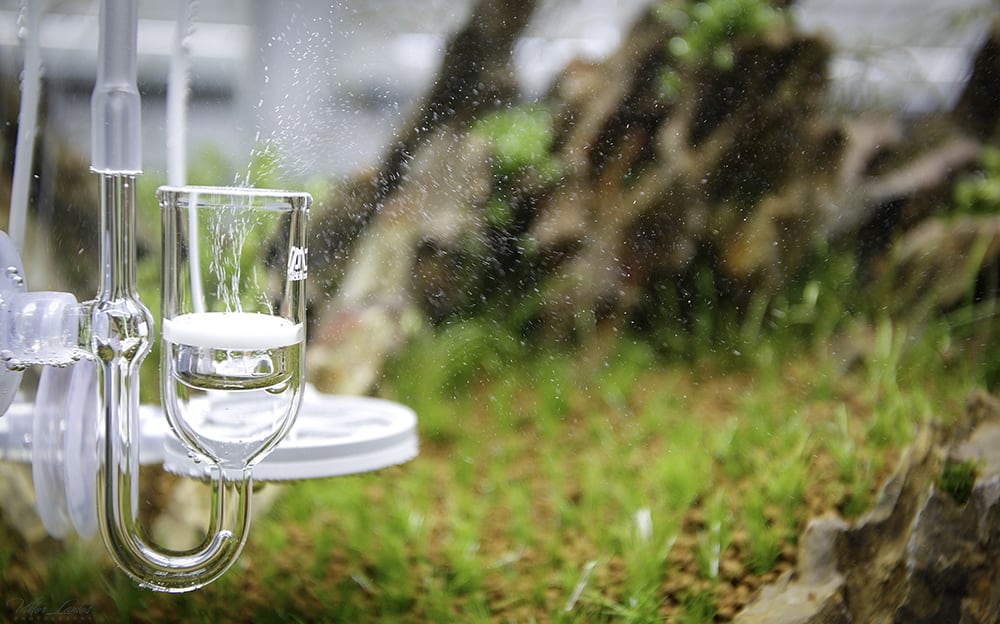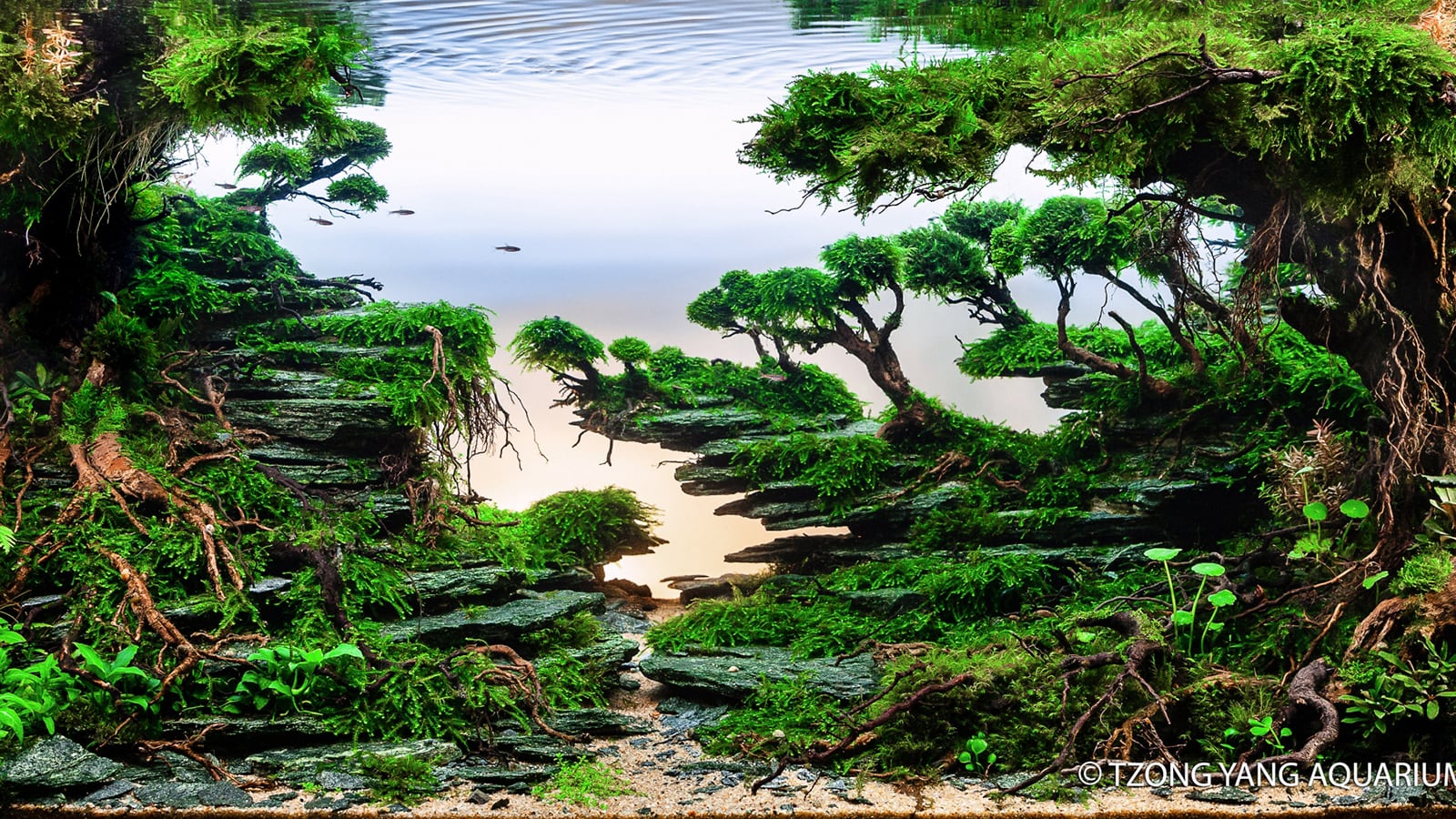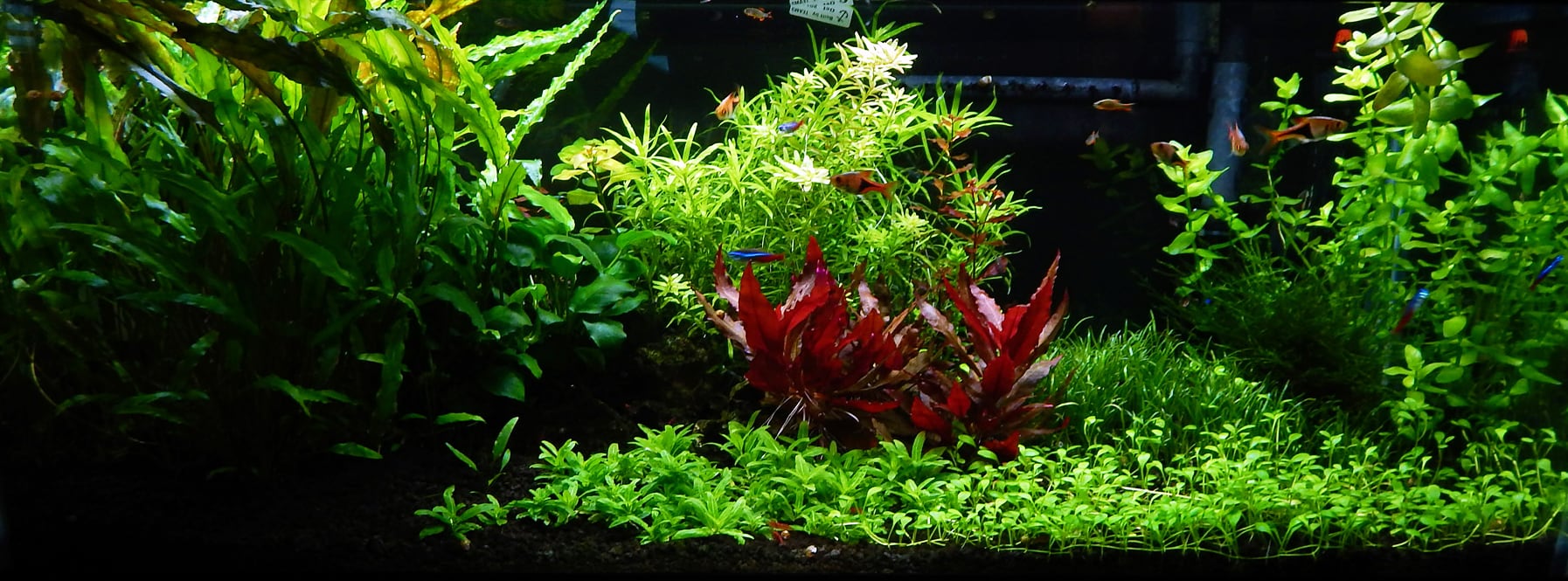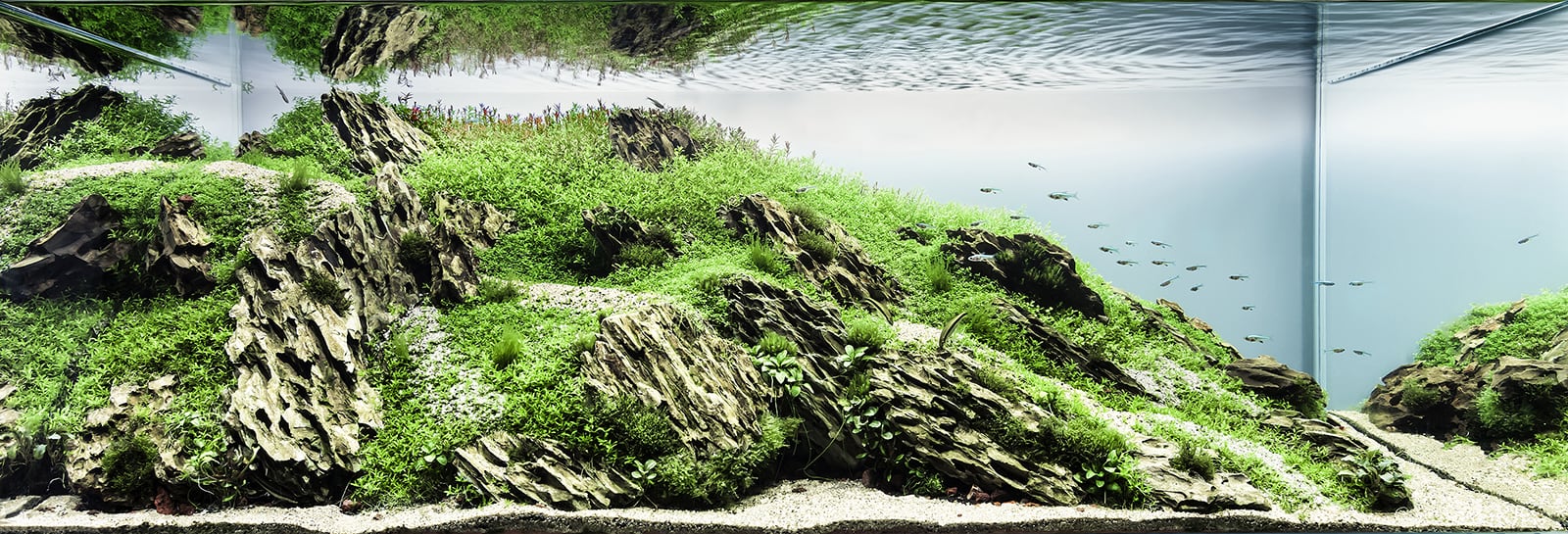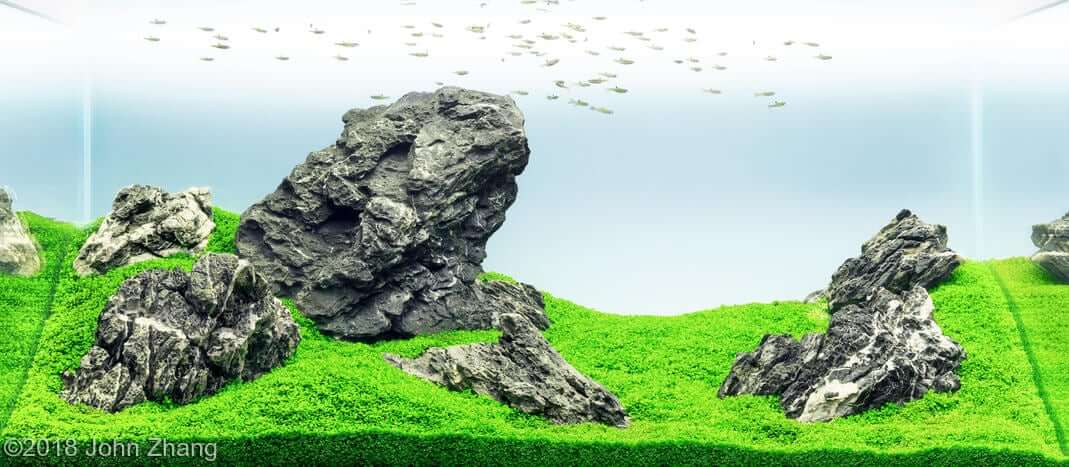Hemianthus Callitrichoides (commonly known as HC Cuba) is both a popular and versatile Aquarium Plant that produces a lush green aquarium carpet effect. It can be used to create a rich base that can contrast against other focal point Aquarium Plants.
Read articleAquascaping Articles
Aquascaping from Italy – Interview with Diego Marinelli
Aquascaping interview with Diego Marinelli, a talented aquascaper from Italy.
Read articleAquarium Plant Fertilizers Used in Aquascaping
Planted tanks need carbon dioxide, good light and nutrients for healthy plant growth. Supplementing the water with a good aquarium plant fertilizers will provide all of nutrients and trace elements that plants need.
Signs that your aquatic plants are deficient in essential nutrients are yellowing or brown leaves. The plants can also take on a glassy or transparent texture. Making sure that plants have the right amount of aquarium plant fertilizers means that they don’t have to work too hard to find it, and they can grow beautifully.
The Importance of CO² in the Planted Tank
Carbon dioxide (CO²) is one of the most important nutrients plants need in order to grow. Carbon is the one fundamental element that stands at the base of all life on Earth, underwater world included. Find out how the presence of CO² in the planted tank influences the aquascaping process, what types of CO² systems you should go for your own aquascape, as well as useful tips and tricks on how to get the best potential out of your plants using CO².
Read articleRomanian Aquascaping Contest – 1st Edition Results
This month the first edition of the Romanian Aquascaping Competition came to a finish. The first one of this kind in Romania, the contest attracted a handful of aquarists from the country, who entered their aquarium in one of the 3 categories hoping that it would be a winner. We’ll present the winners from the first and most important category: Planted tanks, with its 3 sub-categories: less than 100 liters, between 100 and 300 liters and more than 300 liters aquariums.
Read articleAquascaping Interview with George Farmer
We think the best way to learn a new hobby is by getting knowledge and insight from those that are experienced in that particular field. We recently talked to George Farmer, a passionate aquascaper from the UK who is now working for Tropical Marine Centre, and he was kind enough to take some time in answering our aquascaping interview questions. Read on.
Read articleHow To Win an Aquascaping Contest
It’s one thing to be good at something, and another thing to be the best. Aquascaping has gone past the limit of being just a hobby, it has become a valued art. This post is trying to help you find out how to win an aquascaping contest, by touching subjects like basic aquascaping technical and layout conditions, the importance of photography in aquascaping contests, and listing the basic aquascaping judging criteria while exploring what aquascaping judges are after when judging planted tanks.
Read articleThe Jungle Style Aquarium
Possibly the easiest aquascaping type to replicate, the Jungle style aquarium represents a real challenge to the inexperienced aquarist. A fun challenge, nonetheless. Usually separated from the Dutch and Nature style, the Jungle aquascape incorporates some of the characteristics of them both, however it displays a very different appearance from all other styles.
Read articleThe Nature Aquarium Style
The Nature Aquarium is one of the two major styles dominating the world of aquascaping. The basic Nature style aesthetic concepts have been introduced by Japanese aquarist Takashi Amano back in the 1990’s and have become widely popular over the years, influencing the entire future of aquascape design. The style itself has at its origins the naturally growing scenery inspired by the Japanese gardening concept Wabi Sabi.
Read articleThe Iwagumi Layout: An Introduction
The Iwagumi layout is one of the most challenging aquascaping styles out there. Developed around 30 years ago by famous aquarist Takashi Amano, this type of aquascape represents not just a minimalist layout, it also reflects the Japanese culture, spirituality and love for beauty and simplicity.
Read article
